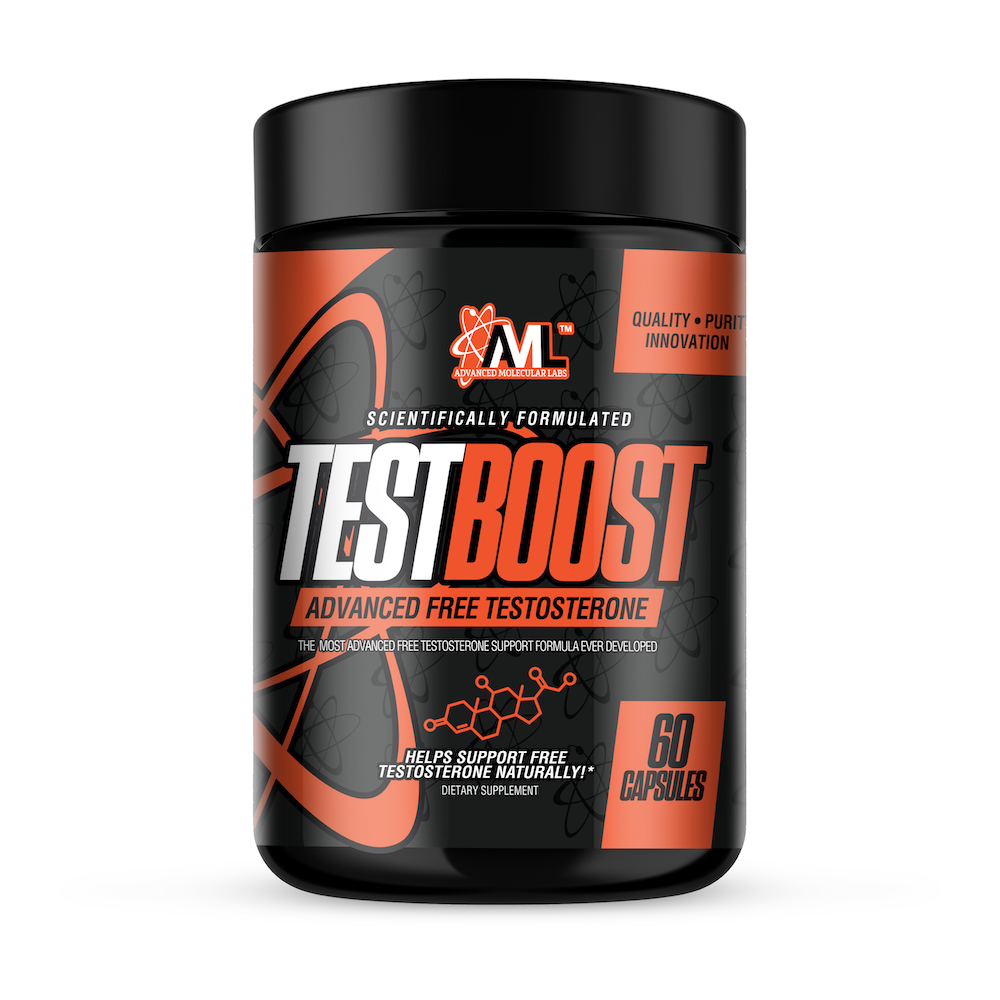


Fadogia Agrestis Human Study: Boost Testosterone Naturally
By Robert Schinetsky
As with other facets of life, what was once old becomes new again. We've seen this phenomenon occur with music, fashion, and nutrition. The supplement industry is no different. There have been numerous ingredients that have debuted to immense hype, only to fall by the wayside due to lack of research or results, and then be re-discovered 10-20 years later. Only, in the case of supplements, it's usually under the guise of what doctors don't want you to know or some other sort of click-bait shenanigans.
Previous examples include HMB, ATP salts, arginine, and tribulus.
That brings us to the topic of today's article -- fadogia agrestis.
The humble plant has been around for centuries and first burst onto the sports nutrition scene back in 2005. Like so many other ingredients, it lost its luster and fell out of the limelight (for a time), relegated to the island of misfit nutraceuticals.
However, a resurgence is happening with fadogia agrestis and testosterone, fueled, in part, by the musings of popular researchers, podcasters, and influencers. This renewed interest has led to discussions about the need for a comprehensive fadogia agrestis human study to validate its effects on testosterone.
So, what's the deal with fadogia agrestis?
Was the industry too quick to brush it aside, or are we experiencing something akin to the turkesterone tempest we've only just started to move beyond?
Let's discuss.
What is Fadogia Agrestis?
Fadogia agrestis (also known as black aphrodisiac and bakin gagai) is a yellowish, Nigerian shrub, traditionally used in the management of erectile dysfunction. The primary bioactives naturally contained within fadogia agrestis are alkaloids and saponins, along with low levels of both anthraquinones and flavonoids.[1]
FYI, saponins are also believed to be responsible for the aphrodisiac and performance-enhancing effects of fenugreek, which is included in AML Test.
Fadogia Agrestis Research
Does Fadogia Agrestis Increase Testosterone?
The primary reason that fadogia has garnered such a rabid following is due to research showing dose-dependent increases in testosterone. These fadogia agrestis studies highlight its potential, yet it's crucial to note that the majority of these studies were conducted in rats, and a comprehensive fadogia agrestis testosterone human study is still lacking. The absence of a fadogia agrestis human testosterone study means we must be cautious in interpreting these results.
The landmark study orally dosed male rats with 18 mg/kg, 50 mg/kg, and 100 mg/kg body weight of fadogia agrestis extract at 24-hour intervals. Researchers tracked their sexual behavior parameters and serum testosterone concentration at days 1, 3, and 5 following administration of the supplement.
The results were rather astonishing in that the rats given the 100mg/kg dose experienced a 6-fold increase (600% increase) in serum testosterone levels!
Researchers posited that the saponins present in the fadogia agrestis study may have assisted in stimulating greater endogenous production of testosterone by elevating luteinizing hormone (LH) levels. Luteinizing hormone is produced by the pituitary gland and helps to maintain testosterone levels. So, as luteinizing hormone levels rise, so too does testosterone.
Improved Sexual Performance
The same study by Yakubu et al also found that fadogia agrestis significantly improved several metrics of sexual health and performance, including mount frequency and intromission frequency all the while markedly prolonging the ejaculatory latency (i.e. it helped the last longer before climax).

Bigger Testes
A follow-up study by Yakubu and colleagues found that fadogia supplementation may also increase the size of the testes.
The same doses of fadogia were administered to the rodents as the initial study (18, 50, and 100mg/kg); however, this trial lasted 28 days. Testicular weight increased between 11-15% (not dose-dependent) and there were also notable increases in sialic acid and testicular cholesterol (cholesterol is a main building block of testosterone).
In their discussion, the researchers commented that increased sialic acid levels in the testes may enhance the structural integrity of acrosomal membrane, which ultimately may enhance the motility and fertilizing capacity of spermatozoa.
Interestingly, these levels remained elevated even 10 days after the rats had stopped receiving the fadogia agrestis supplement.
Anti-Inflammatory & Pain-Relief
To top off the potential benefits of fadogia agrestis, some research (again conducted in rats) suggests it may offer anti-inflammatory and analgesic (pain-relieving) benefits.
Rats were given 200mg/kg of body weight of fadogia agrestis (twice as high as the largest dose given in the testosterone studies), and researchers found that its effects were comparable to that of another well-known anti-inflammatory drug, aspirin, at a dose of 100 mg/kg.
Given that fadogia may help increase testosterone levels while also helping improve one's ability to tolerate pain (via its analgesic effects), it seems like a no-brainer for those looking to train harder, last longer, and build more muscle.
However…
Potential Side Effects
Fadogia isn't without its downsides.
Other research carried out by Yakubu and friends found that oral administration of fadogia agrestis could adversely affect liver and kidney function in male rats. This highlights the need for a fadogia agrestis human clinical trial testosterone evaluation to better understand its effects in humans. A well-conducted fadogia agrestis human study testosterone evaluation would provide clearer insights into its safety profile.
Rats were again given doses similar to that used in previous studies (18, 50, and 100mg/kg). Researchers noted an increase in serum lipid peroxidation as well as a decrease in the activity of ALP (alkaline phosphatase -- an enzyme found in many tissues of the body, including the liver & kidneys).
Reduced ALP activity may have several undesirable consequences, including:
- Impaired transportation of required ions or molecules across the plasma membranes
- Decreased synthesis of nuclear proteins, nucleic acids, and phospholipids
- Cleavage of phosphate esters
However, it is important to note that no clinical toxicity signs nor adverse changes in organ weight for kidneys and liver tissue was noted by the researchers.
Should You Supplement with Fadogia Agrestis?
That decision is ultimately up to you, the consumer.
However, there are a few things to keep in mind.
To date, a comprehensive fadogia agrestis human study does not exist. There are a grand total of six studies on fadogia agrestis with only one investigating testosterone, and those are conducted in rats. Extrapolating the doses used in rats to humans means an individual needs to consume between 1000 - 4500 mg per day to potentially derive benefit. Most supplements on the market that contain fadogia do not contain near-enough of the ingredient.
Furthermore, all the research on fadogia agrestis, to date, as well as those works cited in other reviews, are from the same team of investigators. In other words, there has yet to be any confirmation of the effects of fadogia agrestis extract on testosterone by other research laboratories! This begs the question -- why haven't other research labs invested the time, effort, and money to investigate this highly-touted botanical?
Therefore, consumers face a quandary:
- Could fadogia agrestis be beneficial? Possibly.
- Could it be harmful? Possibly.
- Is fadogia agrestis useless? Maybe.
We simply don't have enough quality data to be sure of the efficacy or safety of fadogia agrestis to answer these questions. Moreover, there is also no standardization listed for many of the fadogia agrestis extracts used in dietary supplements, meaning the consumer has no idea the quality, purity, or potency of the extract.
Until such time as there are human research studies conducted with fadogia agrestis, we cannot recommend using the ingredient, and this is why fadogia agrestis (nor turkesterone, for that matter) is included in AML Test or AML Sex Cocktail.
© Published by Advanced Research Media, Inc., 2022
© Reprinted with permission from Advanced Research Media, Inc.
References
- Yakubu, M., Oladiji, T., & Akanji, M. (2009). Mode of cellular toxicity of aqueous extract of Fadogia agrestis (Schweinf. Ex Hiern) stem in male rat liver and kidney. Human & Experimental Toxicology, 28, 469-478. https://doi.org/10.1177/0960327109106973
- Petit PR, Sauvaire YD, Hillaire-Buys DM, Leconte OM, Baissac YG, Ponsin GR, Ribes GR. Steroid saponins from fenugreek seeds: extraction, purification, and pharmacological investigation on feeding behavior and plasma cholesterol. Steroids. 1995 Oct;60(10):674-80. doi: 10.1016/0039-128x(95)00090-d. PMID: 8539775.
- Wankhede S, Mohan V, Thakurdesai P. Beneficial effects of fenugreek glycoside supplementation in male subjects during resistance training: A randomized controlled pilot study. J Sport Health Sci. 2016 Jun;5(2):176-182. doi: 10.1016/j.jshs.2014.09.005. Epub 2015 Mar 7. Erratum in: J Sport Health Sci. 2018 Apr;7(2):251. PMID: 30356905; PMCID: PMC6191980.
- Yakubu MT, Akanji MA, Oladiji AT. Aphrodisiac potentials of the aqueous extract of Fadogia agrestis (Schweinf. Ex Hiern) stem in male albino rats. Asian J Androl. 2005 Dec;7(4):399-404. doi: 10.1111/j.1745-7262.2005.00052.x. PMID: 16281088.
- MT, Akanji MA, Oladiji AT. Effects of oral administration of aqueous extract of Fadogia agrestis (Schweinf. Ex Hiern) stem on some testicular function indices of male rats. J Ethnopharmacol. 2008 Jan 17;115(2):288-92. doi: 10.1016/j.jep.2007.10.004. Epub 2007 Oct 9. PMID: 18023305.
- Oyekunle, O.A., Okojie, A.K. & Udoh, U.S. Analgesic and Anti-Inflammatory Effects of an Extract of Fadogia agrestis in Rats. Neurophysiology 42, 124-129 (2010). https://doi.org/10.1007/s11062-010-9140-x
Yakubu MT, Akanji MA, Oladiji AT. Evaluation of selected biochemical parameters of male albino rat liver following administration of aqueous extract of Fadogia agrestis. Recent Prog Med Plants 2006; 12: 393-402.; Yakubu MT, Akanji MA, Oladiji AT. Effects of chronic administration of aqueous extract of Fadogia agrestis stem on male rat kidney function indices. Recent Prog Med Plants 2008; 19: 359-






